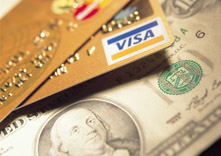Get Safe Online has launched the Online Code of Conduct – a set of ten safety tips, to mark Get Safe Online Week. It’s an annual awareness campaign to reinforce the fact that people can stay online safely by following precautions.
The tips cover a variety of topics from the importance of protecting your smartphone or tablet with a PIN, through how to tell if a shopping or banking web page is secure, to who to report an internet fraud to if you are unfortunate enough to be scammed.
The campaign follows research commissioned earlier this month by Get Safe Online, questioning 2,004 UK adults. The research shows online behaviour and habits of the population, including:
– 59 per cent have had bad online experiences – ranging from an email account being hacked to having credit or debit card details stolen
– The average loss per victim to online crime is £236
– 42pc have a password or PIN on their mobile, and 38pc do not have one on their tablet
– 25pc put security software on their mobile devices
– 47pc do not always log out of websites or apps when they have finished using them
– 49pc use the same password for all of their online accounts
– 40% use the most obvious personal information to create their password
– 31pc of social media users have accepted a ‘friend’ they do not know in real life.
Home Office Security Minister James Brokenshire said: “Get Safe Online Week is a great opportunity to highlight some quick and easy steps people can take to ensure their online experience stays a positive one. Alongside this practical advice we’ve launched the National Crime Agency and the National Cyber Crime Unit and taken the fight to the hackers, fraudsters and criminals who prey on innocent individuals. Building on the advice of Get Safe Online we will be launching a campaign in the New Year to encourage people to be more aware of their online safety.”
Get Safe Online’s Chief Exec Tony Neate said: “As this survey has shown, the most fundamental rules of online safety are not being followed by everyone all of the time. But the things we need to do to protect ourselves are really straightforward, and will save us time, money and hassle in the long run. This is why we’ve created a really simple ‘Code of Conduct’ for everyone to follow at home and at work. Just like crossing the road, there are certain things we should be doing automatically to make sure we stay safe and enjoy being online.”
For example, for more on smartphones and tablets, visit – https://www.getsafeonline.org/smartphones-tablets/#.UmUImxZBRz8
Meanwhile GlobalSign, an enterprise SaaS Certificate Authority (CA), has its own online consumer tips.
Look for “secure site” indicators: Shoppers should always look for the yellow padlock in browsers that indicates a website is using SSL – an encryption technology ensuring that the data sent to the retailer is encrypted and secure. A site using an SSL Certificate can also be identified by a website URL that commences with “https”, as opposed to the standard “http” of a non-secured site.
Protect your privacy and identity: Your privacy is important; protect it at all times to minimise the chance of identity theft. For sites requiring a user name and password to be set up as part of the buying process, try to use different combinations to the ones you use for banking, web mail and other accounts. If they start asking for details you think are irrelevant to the purchase, such as bank account details and date of birth, start questioning why. These details are not needed for a simple online purchase.
Be on the lookout for scams: Beware of unbelievable offers sent by email – regardless of whether you know of the retailer “offering” them. Phishers (fraudsters masquerading as known companies) send millions of emails daily and place thousands of online ads offering the best ‘cannot miss’ deals. If you receive an email or see an online advertisement, be sure to check the URL in the browser address bar. Be extra wary of IP addresses (such as http://245.123.123.1/special-offer) and email addresses or websites containing a well-known brand name with other lettering or numbers (e.g. www.globalsign-1.com).
Use a safe method of payment: Most credit cards offer protection on purchases, so use them wherever possible. Debit cards and other methods of payment usually offer a lower level of protection and may leave the consumer out-of-pocket while a claim is processed. If the merchant does not accept credit cards, or you do not have one, look for other methods of safe payment such as PayPal.
Get the details, keep the records: Make sure you know the merchant’s full address, especially if it’s outside of your own country, and double check the delivery costs and refund terms. This information will help you in case you run into any problems with delivery of items purchased.
For further information about how to “Get Safe Online” visit https://www.globalsign.co.uk, https://www.getsafeonline.org/










